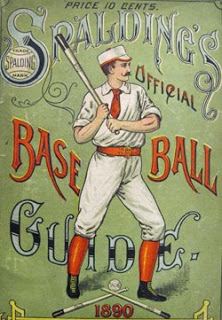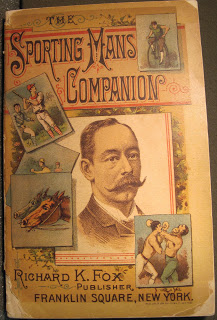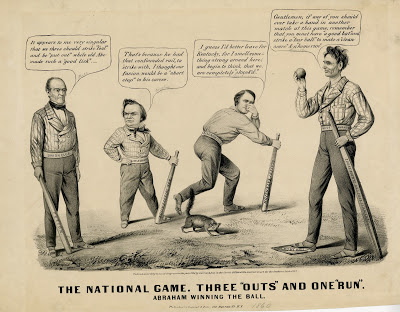Guest post by Esti Brennan, Social Media Intern
Though there’s evidence of the sport dating back to Europe in the late 18th century, the first game of baseball as we know it today was played on June 19, 1846 in Hoboken, New Jersey. Over the years the game has become an iconic part of American culture as well as an internationally-recognized sport, and its evolution and rise are well-documented in the Clements Library collections.

The first American edition of
The Boy’s Own Book, published in 1829, notes that cricket was still the most prominent ball-based sport around, but describes a game called “rounders” that sounds remarkably like baseball as it is played today. Though
The Boy’s Own Book unfortunately failed to expand or update its descriptions over its many years of publication, other texts were not so neglectful.
The Book of Sports by Robin Carver was published in Boston in 1834 and cites
The Boy’s Own Book as a significant influence. The description is quite similar, but names it “base ball” and “goal ball,” emphasizing the American version of the game.
By the late 1860s,
Haney’s base ball player’s reference books were available, detailing the latest updates and additions to the rules of the sport, which underwent frequent and dramatic alterations until the end of the 19th century. These changes were often in response to new-and-improved methods of cheating–common practice even in professional baseball at the time–such as covering the ball with dirt and spit to make it fly in erratically. Harry Clay Palmer, in a reminiscence about the early days of organized baseball, wrote,
“There never was any certainty, by the way, as to the make-up of the teams, for the average captain never knew how many of his men would show up in trim for ball-playing when the time for play arrived. Why? Well, fines did not go in those days; discipline, when attempted, was a farce, and the players knew it.” (Stories of the base-ball field (1890), page 11. Via HathiTrust Digital Library.)
In Palmer’s opinion, it was the rising codification and respectability of baseball that drew it into the national gaze, a process that happened fairly rapidly during the late 1800s. Over a few short decades, leagues were formalized, rules were solidified, baseball games became a respectable form of entertainment, and the 1886 edition of gentlemanly
The Sporting Man’s Companion featured baseball prominently among the pastimes on which it gives statistics and facts (not to mention depicting a truly stunning array of moustaches).
Along with the tracing the evolution of the game and its rules and codes, the Clements collection holds many photos and illustrations of 19th century baseball, from photos of Detroit Tigers players to an 1860
political cartoon featuring Abraham Lincoln (click image for a larger view).
In the present day, baseball ranks on every list of American icons, and the Clements Library collection provides an engaging insight into the colorful past of the country’s favorite sport.
Further reading in the Clements Library collection:
- An 1882 booklet published by the sporting goods manufacturer Spalding provides a guide to scoring according to the latest set of rules.
- Several editions of Spalding’s official base ball guide, edited by Henry Chadwick, “the father of baseball.”
- A board game version of baseball from the 1880s.
- An article on the Clements Library’s 2011 exhibit on Sports in America.



